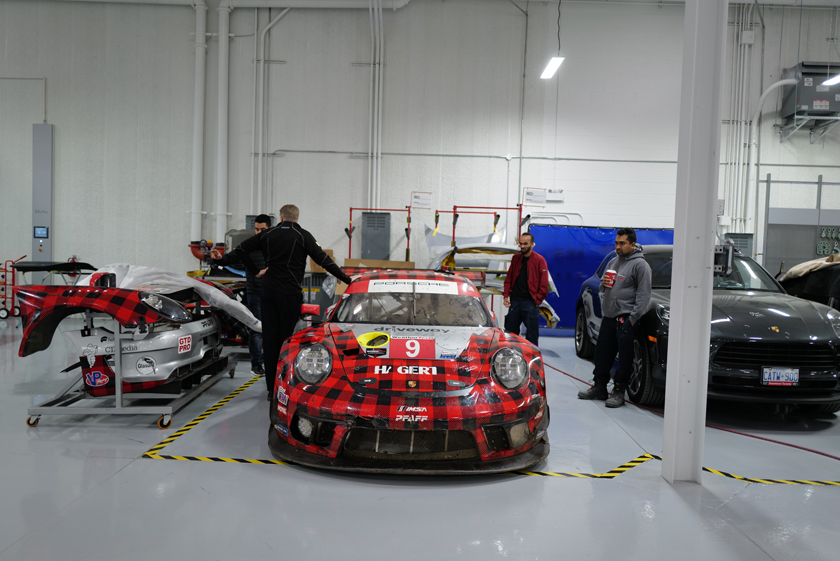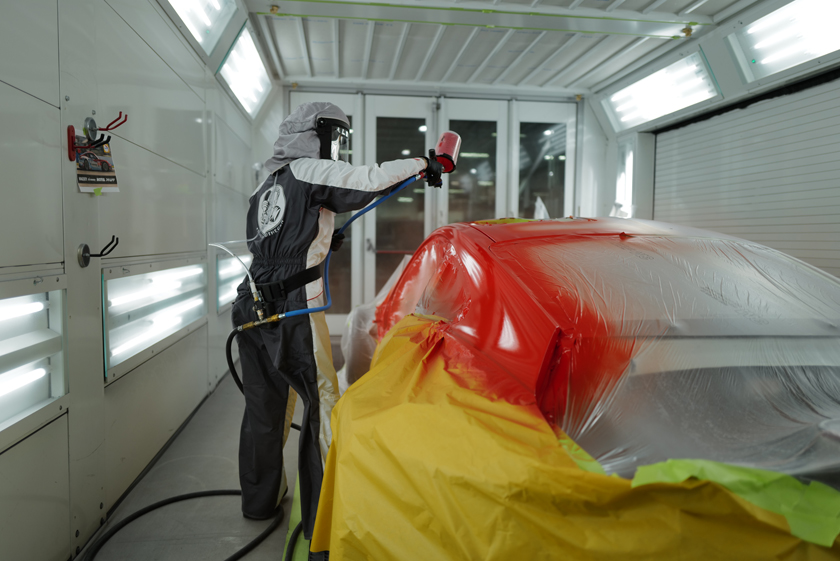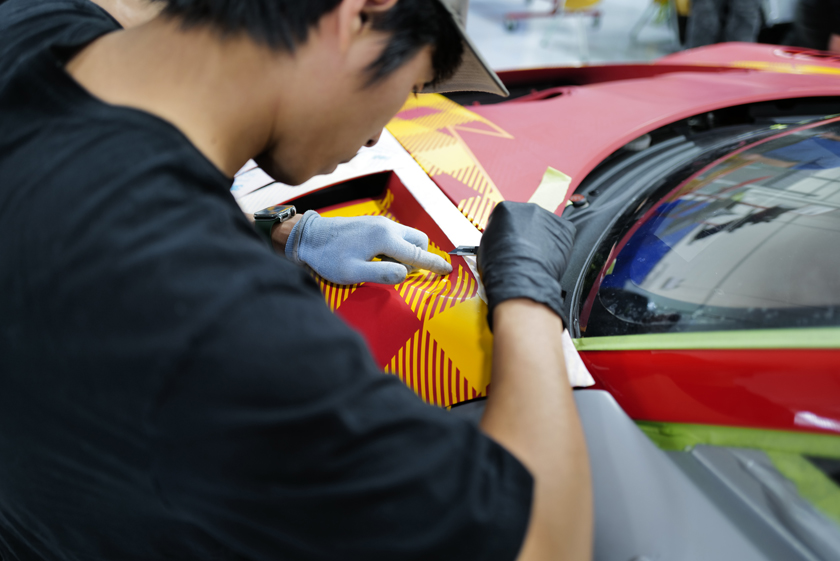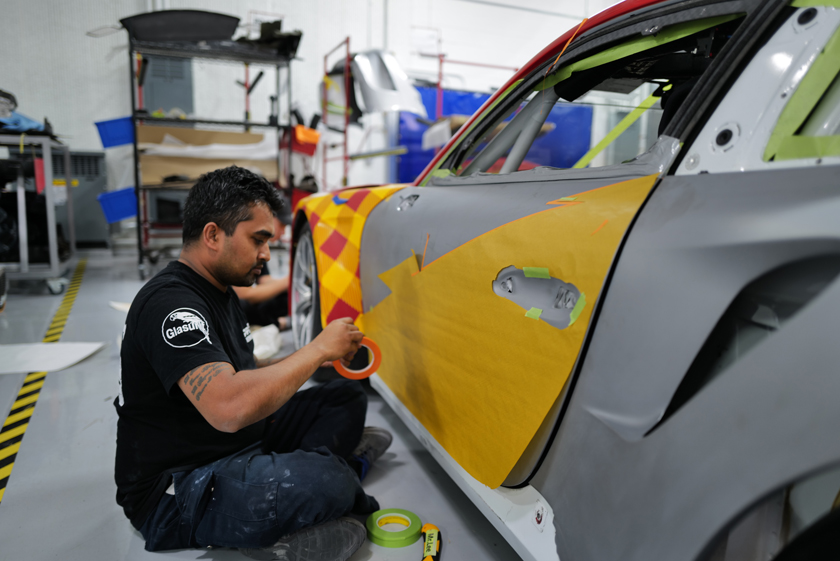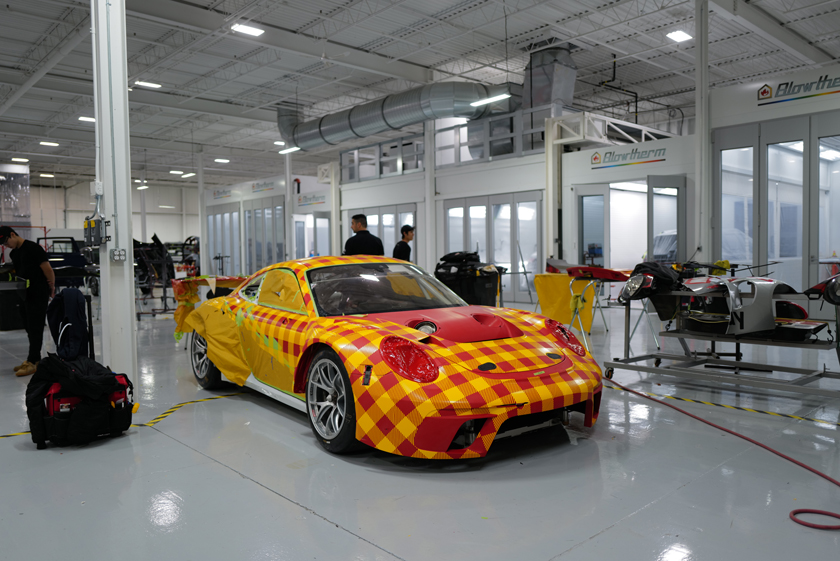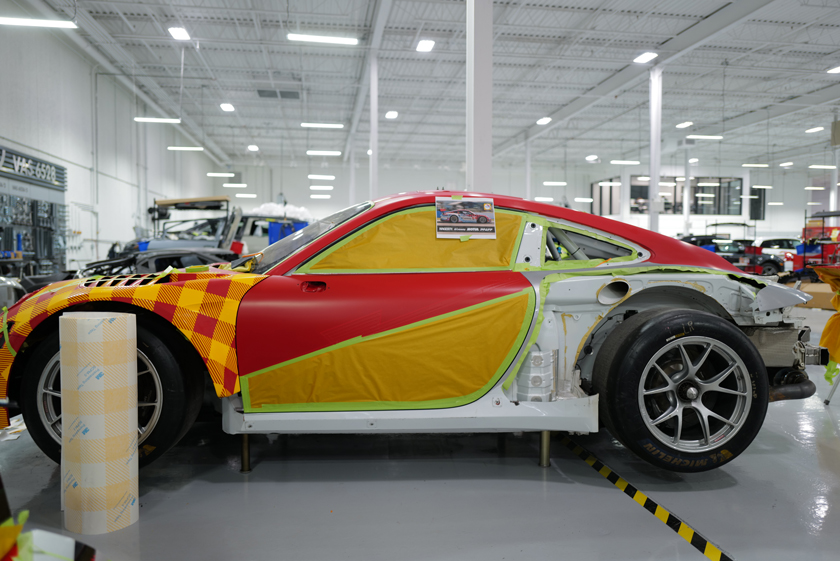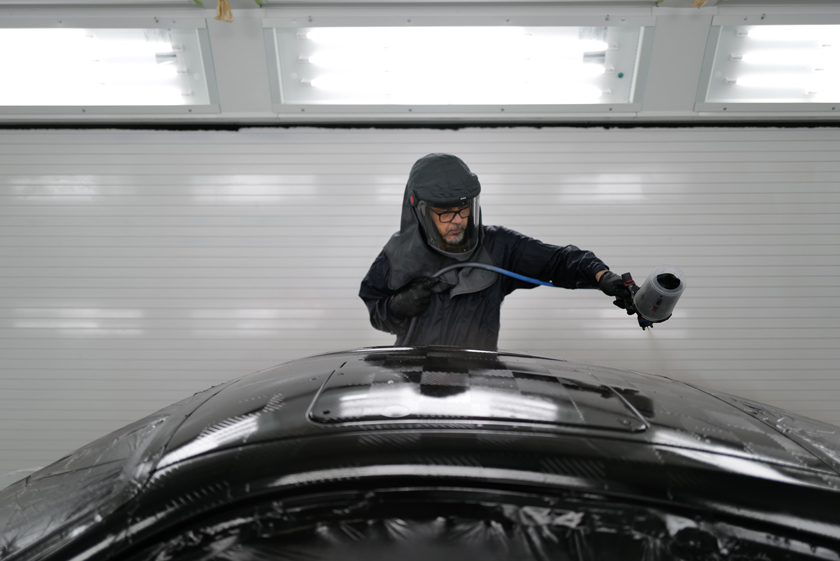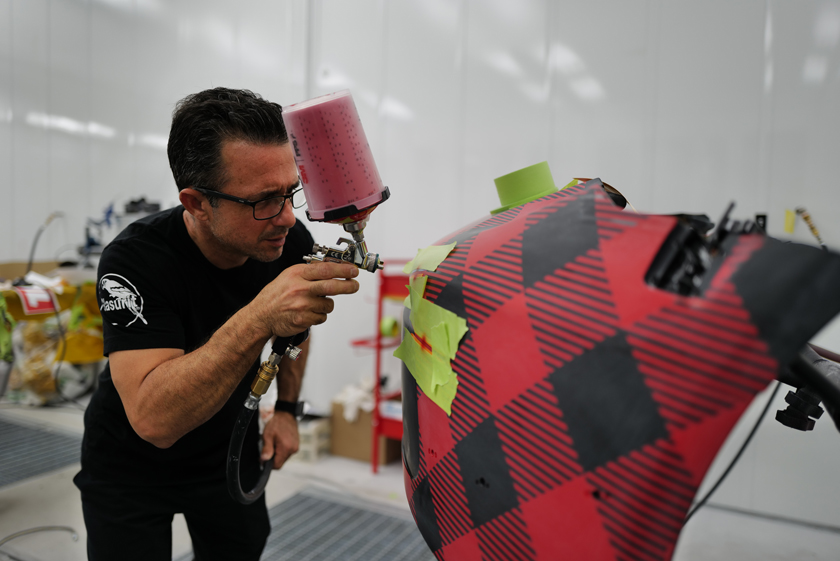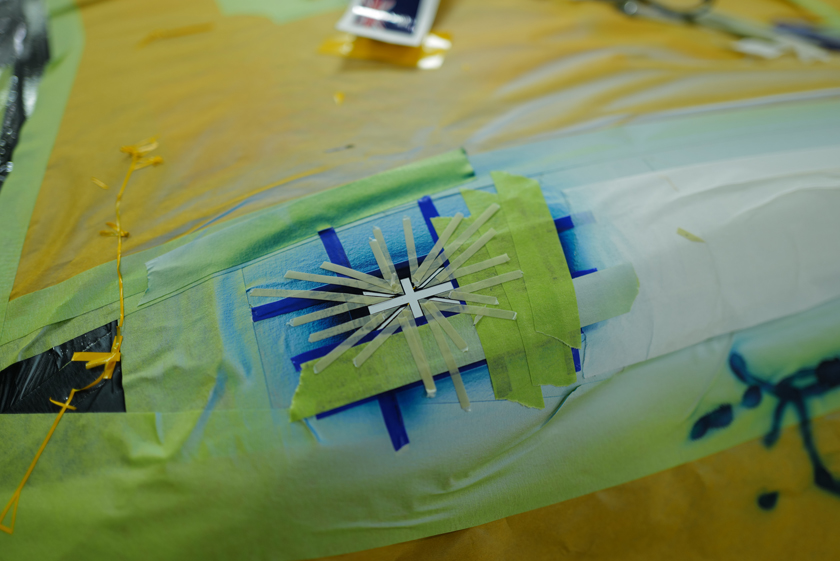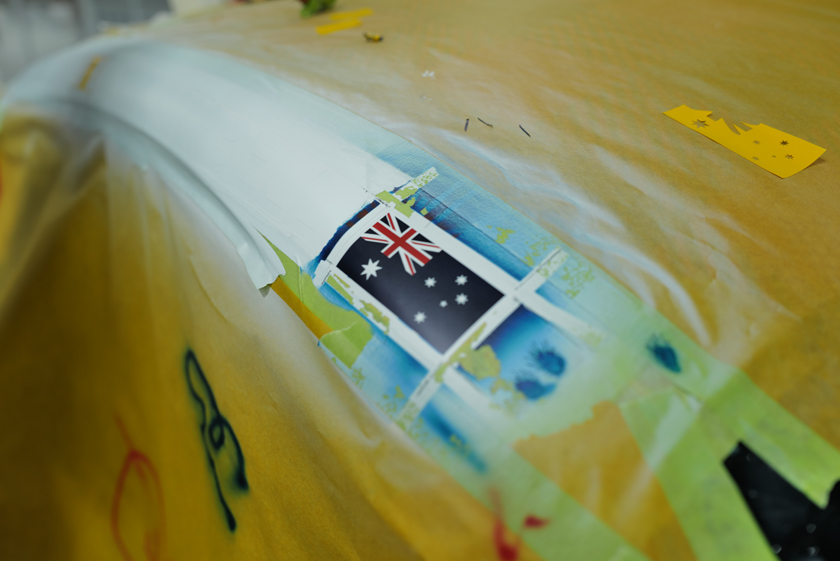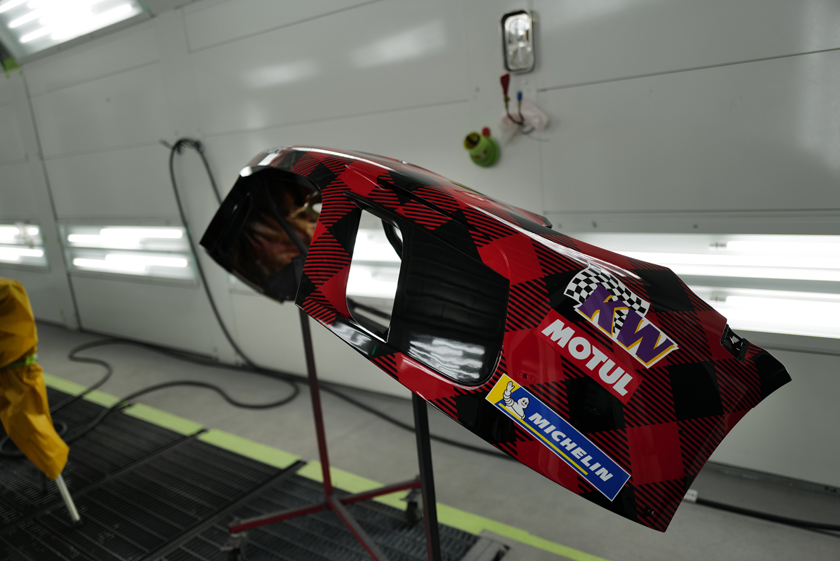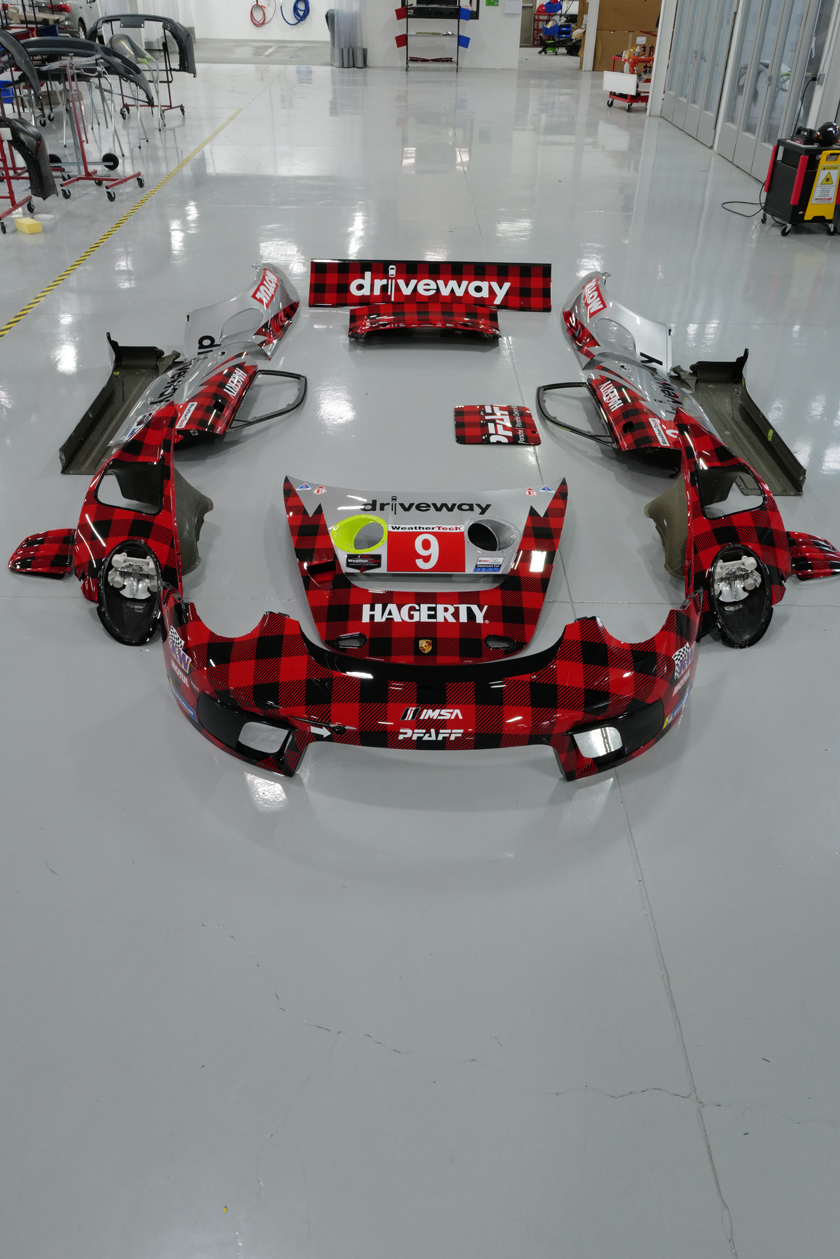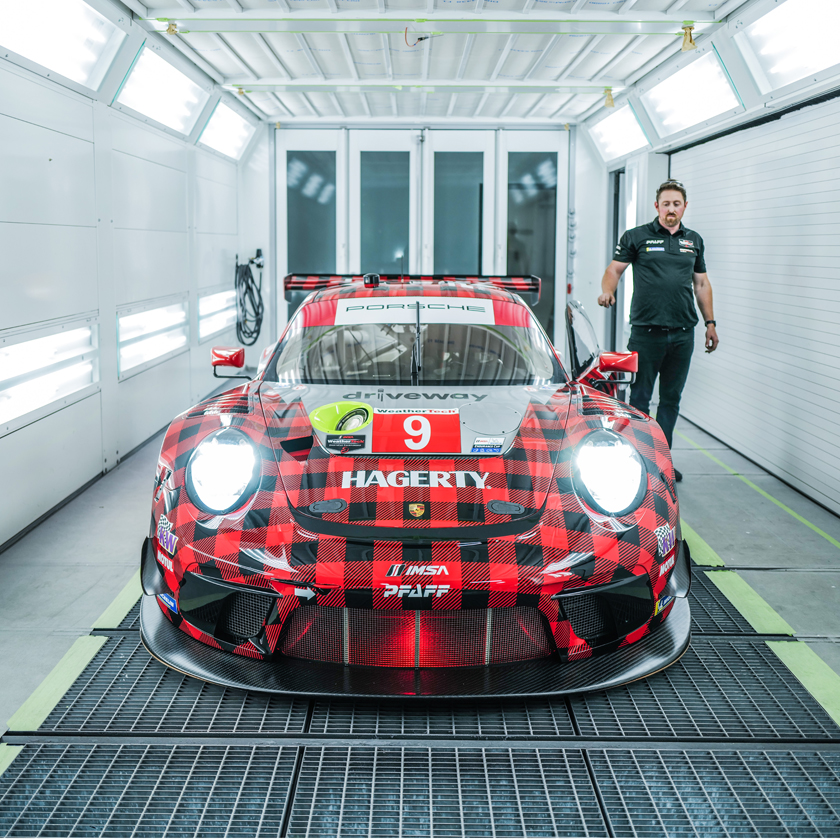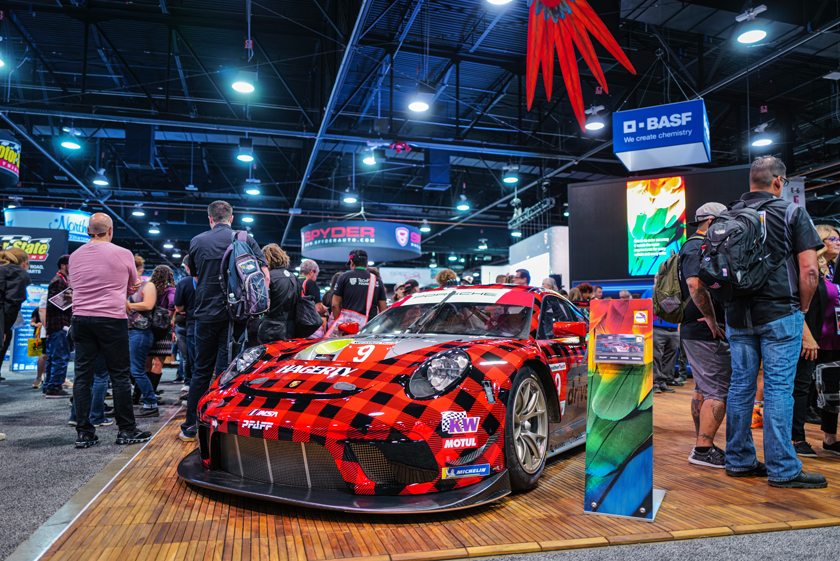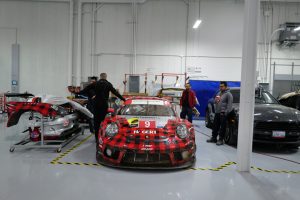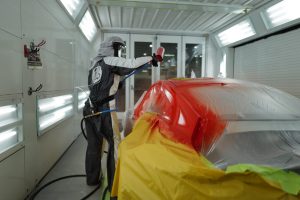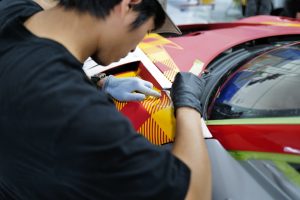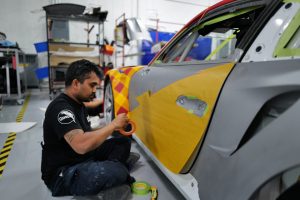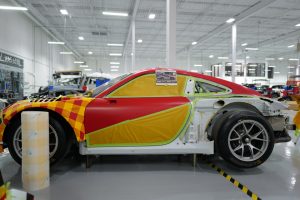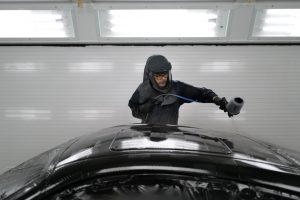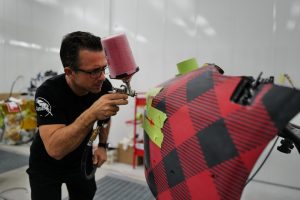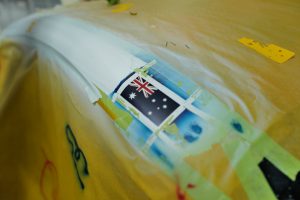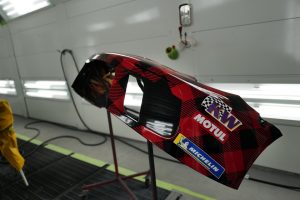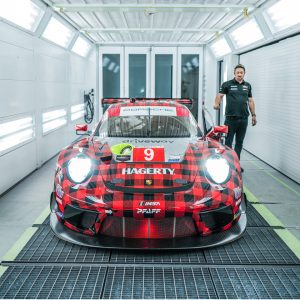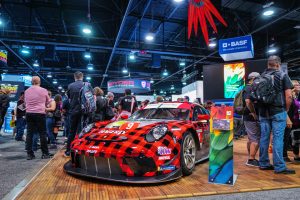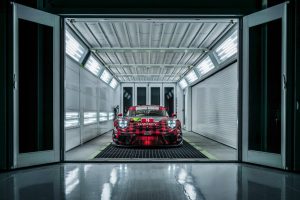
Last October, C17media was approached by long-time client Pfaff Motorsports (Pfaff), to assist with painting the company’s plaid Porsche 911 GT3 R. Photos courtesy C17media
By Carly McHugh
After 11 victories, five pole positions, and two championships on the track, one of the “winningest” race cars in the history of the International Motor Sports Association (IMSA) officially retired in style.
Last October, C17media of Richmond Hill, Ont., was approached by long-time partner Pfaff Motorsports (Pfaff), to assist with painting the company’s plaid Porsche 911 GT3 R, to immortalize its iconic livery.
For the last two seasons, the car had dominated the track sporting a red, lumberjack-style vinyl wrap. What originally started as a joke to show off Pfaff’s Canadian pride at the Rolex 24 at Daytona had stuck with racing fans and evolved into colours synonymous with the company’s name.
However, the time had come to take the Porsche off the speedway, and with this milestone came the transition from a traditional vehicle wrap to a painted vinyl livery. The final product was slated to be showcased at the Specialty Equipment Market Association (SEMA) Show in Las Vegas, Nev., an automotive trade event for small businesses to connect with equipment manufacturers across the industry.
C17media was tasked with creating stencils for the plaid base layer, sponsorship logos, and decals, including driver flags, so the project team could convert the livery into paint. Next, the shop worked alongside Pfaff Autoworks to stencil, then paint all the patterns and imagery onto the car. Instead of traditional vehicle-grade vinyl, the team used Avery paint mask film, to ensure they would produce crisp lines once each stencil was removed. Throughout the process, each colour had to be sprayed before they could lay the next stencil.
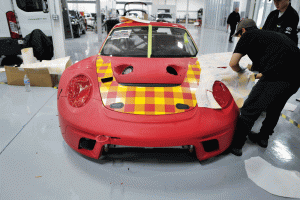
Painting a regular car is already a labour-intensive job, but for this particular project, the team had to factor in the amount of plaid pattern, as well as the dozens of logos.
The shop used their typical tools for the project, but there were a lot more steps and people involved during the installation process. Essentially, the layers of vinyl would need to be applied, painted, peeled, reapplied, and painted again. Depending on the colour of the decal, this process would need to be repeated multiple times. C17media used their Graphtec vinyl cutter to cut and create the paint mask and vinyl decals, as well as their wide-format printers to print the logos.
Painting a regular car is already a labour-intensive job, but for this particular project, the team had to factor in the amount of plaid pattern, as well as the dozens of logos included in the livery. They tested and created many versions of these components, to see which layers had to be applied and painted first, to get the desired effect. Since logos are normally printed and put on in one piece, figuring out how to deconstruct them for paint ended up being one of the greatest challenges. However, once the team had established the correct method, they were satisfied with the final result.
C17media and Pfaff executed the project over a three-week period. In total, the shop spent approximately 600 hours assisting with the updated livery. Once complete, they applied a full Xpel clear wrap over the vehicle, to preserve the paint for years to come.


